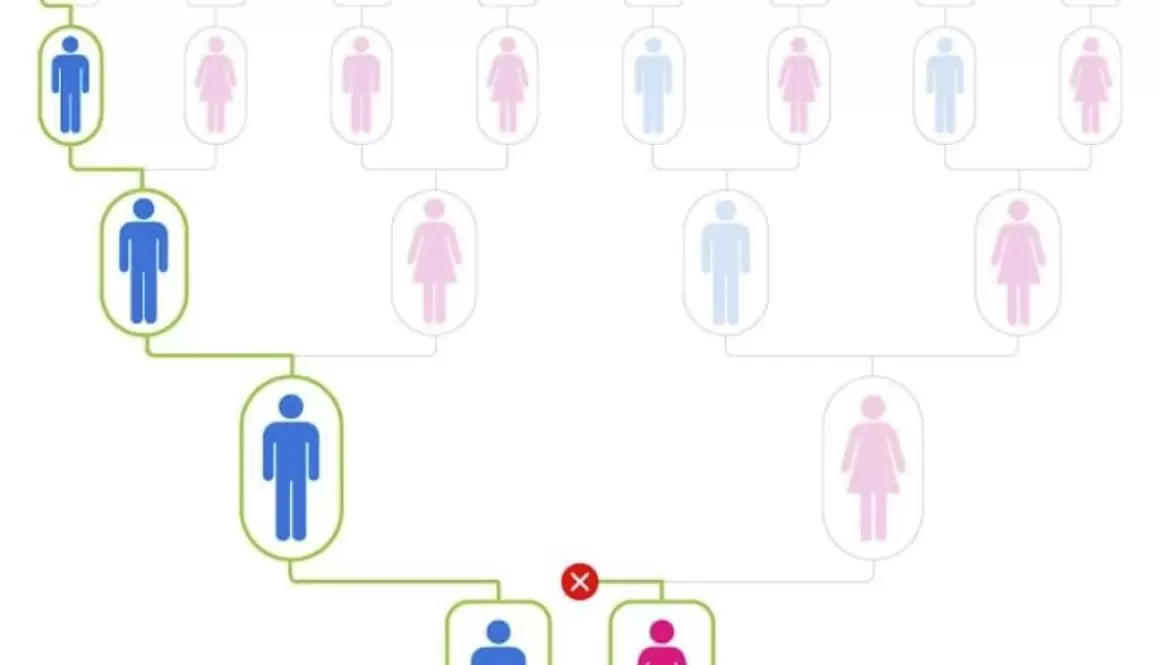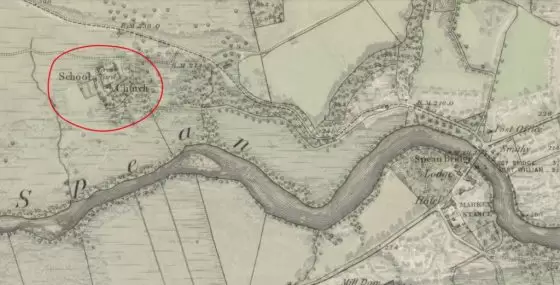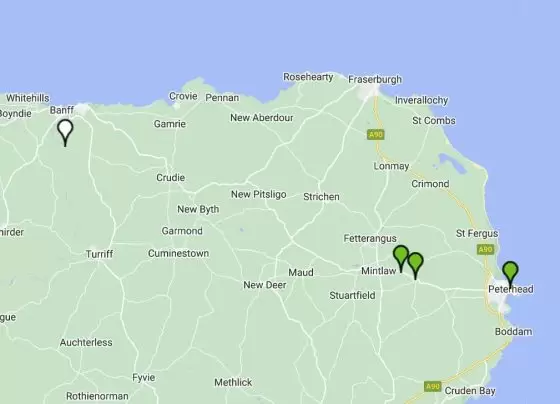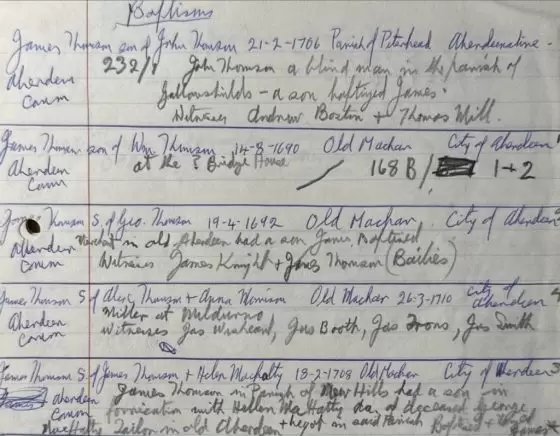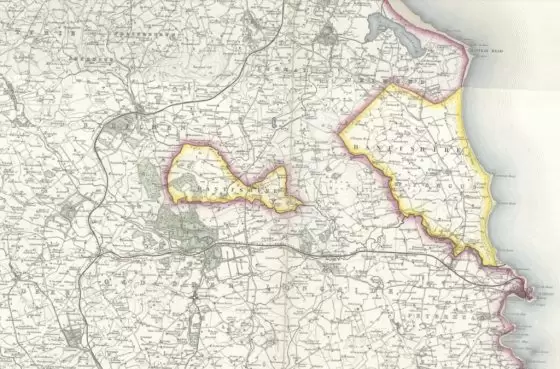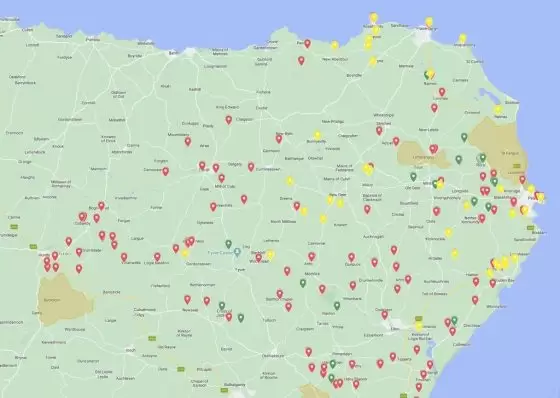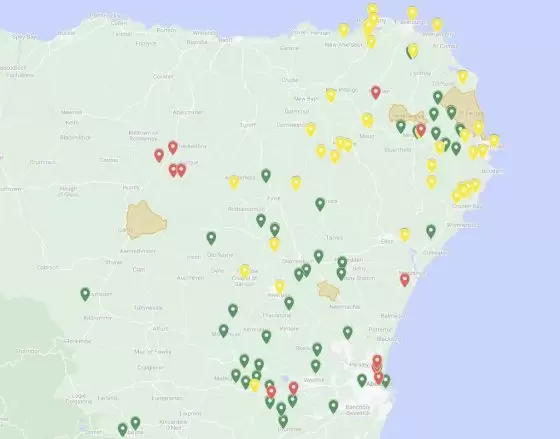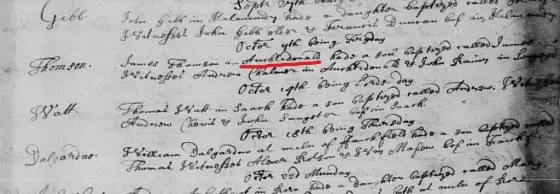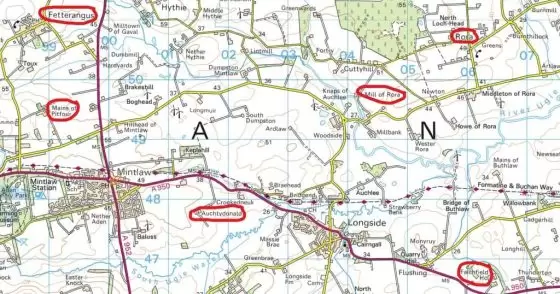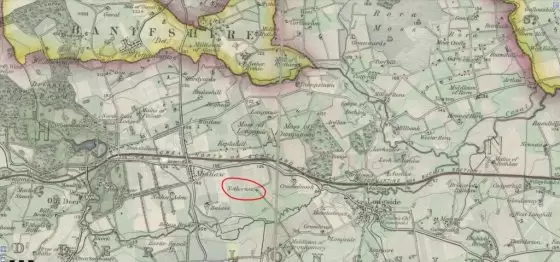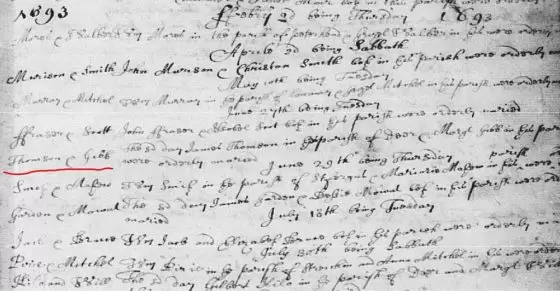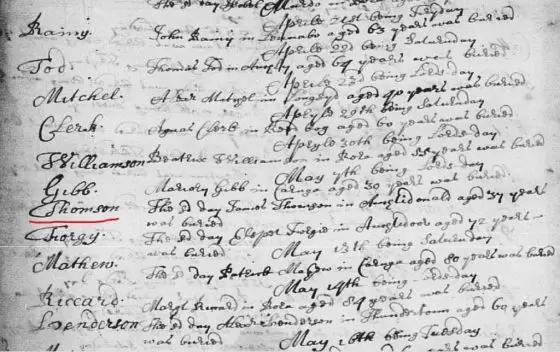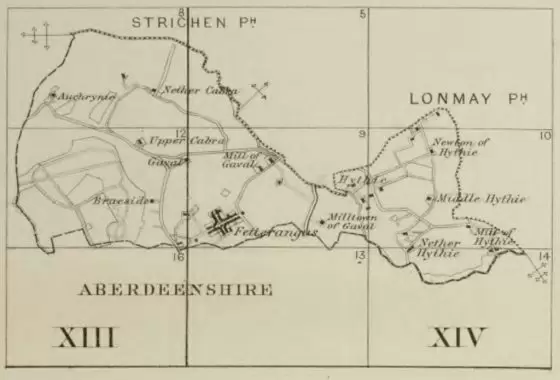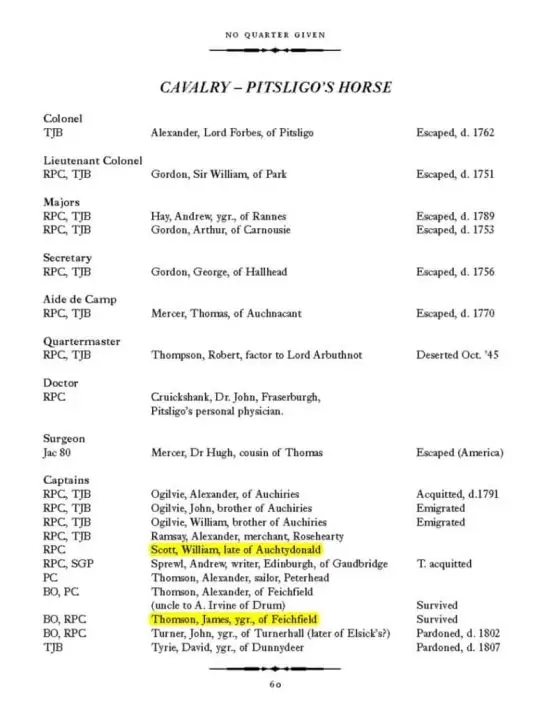The Thomson DNA
The Thomson DNA
The Thomson DNA
I recently took a Y-DNA test in the hope of tracing the lineage of my Thomson ancestors. Y-DNA is passed only from father to son as only biological males possess a Y chromosome. Normal or autosomal DNA is inherited fifty percent from each parent, and thus suffers from the recombination of the maternal and paternal genes with each subsequent generation. As such, it can only be used to trace ancestors reliably going back between 5 and 7 generations.
On the other hand, the DNA that is held in the Y chromosome is passed down from generation to generation unchanged, barring minor mutations. This means that Y-DNA has the advantage of being able to reach back into pre-history and beyond. It does have one major disadvantage that it can only trace the paternal line, in other words father’s father’s father etc. This means that in normal circumstances this will follow the line of the surname. This is the reason that this article is rather grandly titled “The Thomson DNA”
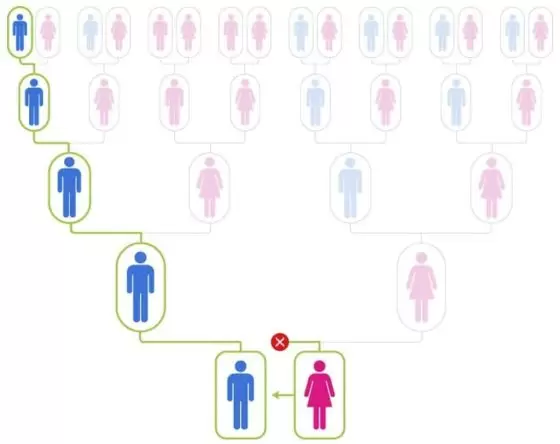
James Thomson
My father spent his retirement trying to trace the history of the Thomson family on the Isle of Lewis. He traced his most distant ancestor through the archives of his employers the SSPCK (Society in Scotland for the Propagation of Christian Knowledge). He succeeded in tracing James Thomson’s employment in Glen Spean in the parish of Kilmonivaig, Lochaber as a schoolmaster and catechist of the Kirk starting in Laggan in 1721.
He also noted that the SSPCK recorded that James had come from Banff, which he interpreted as possibly including the whole county of Banffshire. His search for his most distant Thomson ancestor became known within our family as the “Hunt for Jimmy” and you can read about his research into James Thomson here.
Y-DNA Results
Sadly, he discovered that the parish register for Kilmonivaig church had been destroyed in a storm and there was no further information to be found in the SSPCK archive. He regretfully concluded that he could go no further in his research, and James Thomson, who moved to the Isle of Lewis in 1736, has remained our most distant ancestor ever since. That has remained the case for over thirty years until the advent of Y-DNA testing. My test results showed that I had 3 strong DNA matches on my Y chromosome.
Tantalisingly, two of these matches were for the surname THOM. I assumed that my surname of THOMSON might be a derivative of THOM, in other words SON of THOM, although I have since discovered that THOM and THOMSON are simply variations of the same surname.
The third match was to a family called WILL. Also, these surnames need to include the spelling variations of THOME, WILLE, THOMSONE, THOMPSON and THOMSONN, all of which occur in the Aberdeen and Banff records.
Search Strategy
When my father embarked on his search for our ancestor, he only had three pieces of evidence to guide his search. Firstly, he knew his name was James Thomson. Secondly, he knew he came from Banff or Banffshire and thirdly, he had an approximate date window for his birth, based on the fact that he started working as a schoolmaster in Lochaber in 1721.
With the benefit of my Y-DNA results I now have a fourth and vital piece of evidence. I need to be able to demonstrate that my ancestor had a connection to the ancestors of the Thom and Will families from the parish of Longside, to whom I am indisputably related.
My father spent many days in the Record Office in Edinburgh scouring through the old parish registers. He listed all the James Thomson baptisms he found, and then drew a line through the ones he had eliminated, presumably because he found evidence that they were still living in the area after our ancestor had moved to Lochaber. Unfortunately, he does not record the reasons he found for elimination.
I have made my father’s research notes available for download.
Further Search
My father’s search strategy was straightforward. He searched the baptismal records in the old parish registers, and made an extensive list of potential candidates, born during the requisite period and baptised as James Thomson. For reasons that I do not understand, the one parish he appears not to have checked was the parish of Longside in Aberdeenshire.
The main advantage I now have, as a result of the Y-DNA evidence, is that I have a much more narrowly focussed geographical area in which to search. This area could broadly be defined as being centred on the parish of Longside, but also including the adjacent parish of Peterhead to the east and the adjacent parish of Old Deer to the west.
The search area should perhaps also include the parish of St Fergus, which lies along the coast to the north of Peterhead, and is outlined in yellow on the map opposite. The two areas coloured yellow on the map were geographically detached exclaves of Banffshire, until 1890. The yellow area to the left in the map included the lands of Fetterangus and the Hythie estates forms the northern part of the parish of Old Deer and was also part of Banffshire.
So if James Thomson came from either of these areas, he could be shown to be in close proximity to the DNA evidence and also could quite correctly describe himself as coming from Banffshire, even though this area has formed part of Aberdeenshire for over a century.
Poll tax 1696
I started my research by replicating my father’s work. I decided to look for baptisms of James Thomson, Thomsone, Thompson or Thomsonn anywhere in Banffshire or Aberdeenshire between the years of 1692 to 1697. In other words, he would have been aged between 23 to 28 when he started work as a schoolmaster and catechist in Laggan in 1721. I created a shortlist of 17 individuals, to which I will return later.
There is one major drawback in basing a search strategy on the baptismal registers. They present an incomplete picture of the births, because 40% of the parishes in Aberdeenshire and Banffshire have no baptismal registers before 1700. I made a list of the 136 parishes that had no baptism register for the period of my search. Most of these parishes were geographically remote from the main centres of population and also sparsely populated, and of little interest to me. However, the parish of Old Deer, which was at the very heart of my search area has no baptismal register before 1735.
So, I decided to examine the valuation roll for the 1696 poll tax, to see whether this might provide information about Thomson families living in Old Deer at this time. The 1696 poll tax was a Scotland wide tax introduced to pay for foreign wars, but it acts like a census, in that it is a snapshot in time. It lists all people, male and female, over the age of 16, who were not paupers. It records their names, their occupation and where they lived. It provides information about the family unit, but unfortunately will not identify young children such as James Thomson, but it does identify eight male Thomsons living in the Parish of Old Deer, and where they lived. I am only interested in identifying males, as females cannot pass on the Y-DNA.
Initial research shows that five of the males from Old Deer were living with their wives in close proximity to Longside. As I have no way of knowing whether any of these families had a child called James, I refer to them as the ghosts of Old Deer. Unless, I can find reference to them in the testamentary or kirk session records, I have no way of knowing whether or not they had a child called James Thomson.
It also enabled me to visualise the geographic distribution of the Thomson, Thom and Will families at that particular moment in time.
Banffshire
Much has been made of the fact that James Thomson was a teacher from Banffshire. However, the DNA evidence now reveals a genetic link to the Thom and Will families, including spelling variations thereof, from north east Aberdeenshire, with whom I share a Y-DNA genetic inheritance.
Even acknowledging that the baptism registers do not present a complete picture, the evidence in the table opposite demonstrates that the Thom and the Will families had zero connection to what I would describe as 20th century Banffshire i.e. excluding the parish of St Fergus near Peterhead.
Although I had already started to eliminate some of my “James Thomson” candidates from Banffshire for other reasons, as did my father, I feel that I am now sufficiently confident in the DNA and statistical evidence to downgrade the three candidates on my shortlist who come from 20th century Banffshire. This obviously does not exclude any individuals who come from the geographically detached parts of 19th century Banffshire.
As the purpose of the analysis is to explore how the Y-DNA might have been transferred or shared, female baptisms have not been included in this analysis.
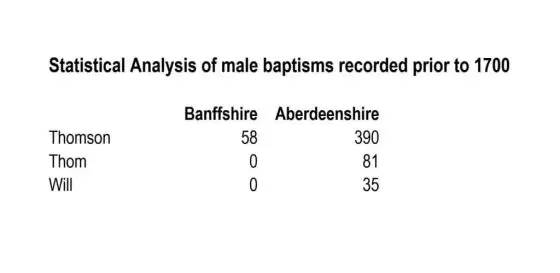
Refining the Search
Having downgraded the three candidates on my shortlist who came from 20th century Banffshire, for reasons mentioned above, I then matched the remaining candidates on my shortlist to their parents from the 1696 Poll Tax and plotted their locations on an interactive distribution scatter map, to display visually how these individuals related to the parish of Longside and also to other members of the Thom and Will families in Aberdeenshire.
The red markers on the map indicate a baptism of a James Thomson, within our defined date window. The green markers indicate the location of a member of the Thom family and the yellow markers the Will family, based on the 1696 Poll Tax records.
It is clear from the map that the four candidates from the parish of Forgue, on the left of the map, can be downgraded on the basis that they have no obvious proximity either to the focus of the DNA evidence or to other members of the Thom and Will families. The same applies to the red marker near Newburgh in the parish of Ellon. You can view the details of each candidate by clicking on the coloured marker on the map, and you can control the visibility of individual families by unticking the check boxes on the left of the map.
The five candidates in the Town (now City) of Aberdeen are less easy to discount. Aberdeen is only 30 miles south of Longside and as the administrative centre of the region, our families could reasonably have been expected to have connections with the Town. Although there were no members of the Will family living in Aberdeen in 1696, there was a member of the Will family living in the Footdee quarter in the 1655 Stent Tax. Also, as the DNA shared by the Thom, Will and Thomson families is believed to have migrated northwards up the east coast, it would be foolish to rule out an historical connection with Aberdeen that might have ocurred earlier in the 17th century, or even the 16th century.
It may never be possible to reach a genealogical standard of proof for my ancestor because of the absence of records in Old Deer, however the overwhelming conclusion at the moment, is that the highest probability of the possible candidates for James Thomson, are the two candidates from the Longside area. James Thomson of Auchtydonald and James Thomson of Strichen. This is based on proximity to Banffshire, proximity to the DNA evidence and proximity to the ancestors of the Thom and Will families.
James Thomson of Auchtydonald
Having reduced my shortlist to two candidates, I decided to research both of these individuals in more detail to see whether I could uncover evidence that would confirm that they were my ancestor, or also evidence that might rule them out from further consideration.
I traced James Thomson’s birth in the Longside Parish Register to 11 October 1694. The register records that he was the son of James Thomson of Auchtydonald, which at that time was a manor house about a mile west of Longside.
This document opposite transcribes as follows:
James Thomson in Auchtidonald had a son baptized called James. Witnesses Andrew Chalmer in Auchtidonald & John Rainey in Longsyd.
Parish of Longside
It did not take long searching the Old Parish Registers in the National Records of Scotland to discover that there were a large number of baptisms registered for people with the surname Thom between the years 1553 and 1710 in the parish of Longside, 58 baptisms to be precise. The majority of these seemed to come from the village of Rora, about a mile north west of Longside, but there were also a number of baptisms for members of the Thom family and the Will family from the Manor of Auchtydonald.
The map opposite shows the various locations in the vicinity of Longside. The farmhouse of Auchtydonald can be seen bottom left. In the 17th century, the Manor of Auchtydonald extended to include lands of Fetterangus on the top left. Rora, can be found at the top right of the map.
Early Life
James Thomson of Auchtydonald was born on 11 October 1694. His father was James Thomson and his mother was Margaret Gibb, who was born in Torhendrie, in the parish of Longside on 4 February 1665. However, the 1696 Poll Tax records show only James’ father living at Auchtydonald and records his occupation as a grassman. A grassman was a tenant of a cottage with no arable land who had certain limited rights to grazing, thus giving rise to the phrase “grassman”.
The burial records for Longside, show that Margaret Gibb was buried on 12 October 1694, the day after James was born, so she must have died in childbirth.
James Thomson’s Parents
James Thomson (senior) married Margaret Gibb of Torhendrie, Longside on 27 June 1693. The marriage register transcribes as follows:
Thomson & Gibb – The s[ai]d day [ie today] James Thomson in the parish of Deer and Margt Gibb in this parish were orderly married.
Margaret was the daughter of George Gibb of Torhendrie.
Death of James Thomson’s Father
Margaret Gibb’s husband, James Thomson, is recorded as coming from the parish of Deer, which is now known as Old Deer. As I mentioned before the earliest available baptismal records for Old Deer start until 1735, so we are unable to look up his baptism, but we can tell from his burial record that he was aged 37 when he died in 1699, so he would have been born in 1662.
James Thomson and Margaret Gibb were married in 1693, so James Thomson who was born in 1694 would have been their first and only child, as his mother died in childbirth. Sadly, his father died five years later, so by the age of five, James Thomson was not only an only child, but an orphan.
His father’s burial record transcribes as follows:
Thomson – The s[ai]d day James Thomson in Auchtidonald aged 37 years was buried.
If this child were indeed my ancestor, I now need to find out what happened to him after his parents died, how he managed to get a good education and obtain work as a schoolmaster and catechist in Lochaber in 1721. I believe that he married Jane Smith of Peterhead on 26 June 1718, so that suggests he stayed in the Longside/Peterhead area. This work will take time and patience but I see no reason not to publish my interim research.
Research into James Thomson of Strichen is also ongoing in parallel. As and when I have something to report I will publish a further article.
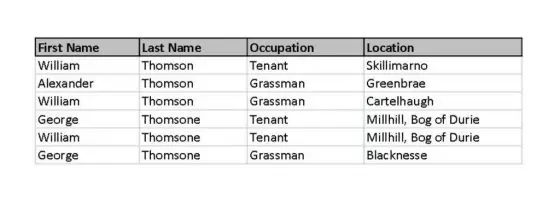
The Ghosts of Old Deer
As no baptismal register exists before 1735 for the parish of Old Deer, I compare the task of searching for my ancestor in Old Deer as like hunting ghosts.
I have established from the 1696 Poll Tax Roll that there were eight male Thomsons living in Old Deer in 1696. Six of them were living with their wife, and so could reasonably be expected to be raising a family.
So, if my ancestor, James Thomson, was born in Old Deer, these six individuals could be considered potentially to be his father. I have listed them in the grid opposite. Firstly, their names, William, George and Alexander suggest no obvious patronymic reason for naming their son James.
Across the whole of Aberdeenshire there were 184 male Thomsons living with their wife in 1696. If this list is filtered to only show those living in parishes that were recording baptisms before 1700 the number reduces to 96 men. From these men 14 male children were born who were baptised James Thomson, in other words about 14%. I realise that this is a very crude statistic, but if applied to the six men of Old Deer it would suggest that it is improbable, but not impossible that one of their sons was baptised James.
Also, Alexander Thomson of Greenbrae was located some 12km from the focus of the DNA evidence, so probably of less interest as geographically remote from the DNA evidence. George Thomsone of Millhill, Bog of Durie had two sons, Robert and George, over the age of sixteen living at home, so also less likely that they would have been giving birth to a new son called James. In summary, although unlikely, I can’t rule out the possibility that my ancestor James Thomson, was born in the parish of Old Deer.
Fetterangus, Banffshire
In the book “Buchan” by Rev John Pratt, first published in 1859, the author notes (page 216) that;
The parish of St Fergus, though locally situated in the county of Aberdeen, was, by a feudal peculiarity, reckoned, along with Fetterangus and a portion of Castle Street of Aberdeen, to be in Banffshire, until formally transferred to Aberdeenshire in 1890 by the Boundary Commissioners appointed under the Scotch Local Government (or County Councils) Act of 1889. It was originally the property of the Cheynes, who, being the hereditary Sheriffs of Banff, were naturally desirous to have their family domains within their own jurisdiction, and were able to secure its annexation to Banffshire. The lands of St. Fergus, embracing the whole parish, passed, by marriage, about 1358, to the De Keths, of the Marischal family, with whom they remained till the forfeiture in 1715. [presumably as a result of their part in the Jacobite Rising (my note)].
This explains why the northern part of the parish of Old Deer, which included Fetterangus and the Hythie Estate, was part of Banffshire.
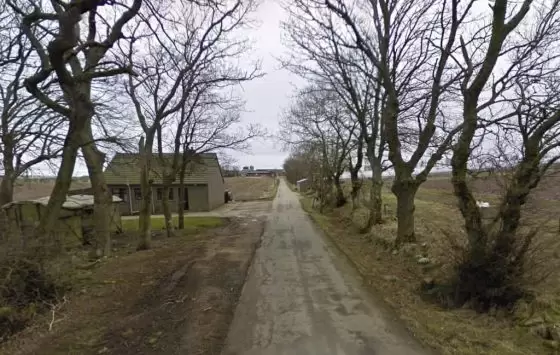
The Estate of Auchtydonald
The same author describes the estate of Auchtidonald on page 213;
Between Longside and Mintlaw is the estate of Auchtydonald, now part of the Pitfour estates. In 1329, King Robert the Bruce granted a charter of it to Robert de Keith, Marischal of Scotland. By a charter recorded in the “Registrum Episcopatus Aberdonensis,” and “dated at his manor of the Forest of Kyntore, “October 8, 1378, “William of Keith, Marischal of Scotland, gave six merks yearly, from the lands of Auchtidonald, to endow a chaplainry (called the chaplainry of Auchtidonald), in the choir of the Cathedral of S. Machar at Aberdeen, ‘for the soul’s health of his well beloved Clerk, Sir William of Calabre, Prebendary of Ellon and Canon of Aberdeen.’ This grant of six merks was confirmed by Pope Clement VII in 1380, and by King Robert II in 1385. By consent of Sir William of Calabre, the chantry was suppressed in 1392, and the six merks were bestowed on the Staller or Vicar Choral of the Prebendary of Ellon. From a decree of the Lords of Council, in 1493, directing Thomas Davidson in Auchtidonald, and Andrew Keith in Aden, to pay to Arthur Forbes of Keres, the price of certain corn and oxen, taken from the land of Terwechty, it may be inferred that, at that date, Auchtidonald was occupied by Davidson. According to Mr Alexander Hepburn’s description of Longside in 1721, William Scott was the name of the then Laird of Auchtidonald, and his manor house was of feal. [I’m not sure what feal is but I have established that the manor house was not built of stone]
Fetterangus in Banffshire
The lands of Fetterangus, Banffshire formed part of the Auchtydonald estate when James Thomson was born as the note below shows that they were sold to Alexander Gordon in 1706. John Henderson in his book “Aberdeenshire Epitaphs and Inscriptions” notes on Page 234 that;
The above Alexander Gordon …. who acquired the lands of Fetterangus from James Scott of Auchtydonald, who had secured sasine on them on 28th January, 1706, for an annual rent of £65 15s 2d Scots.
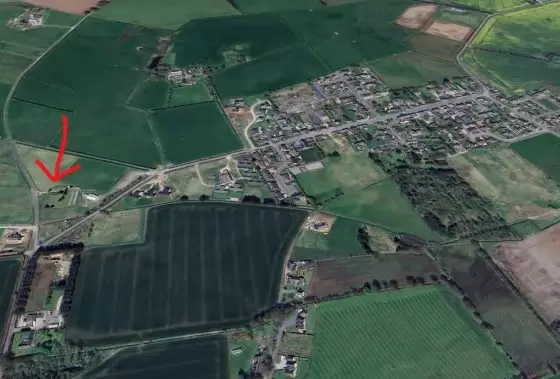
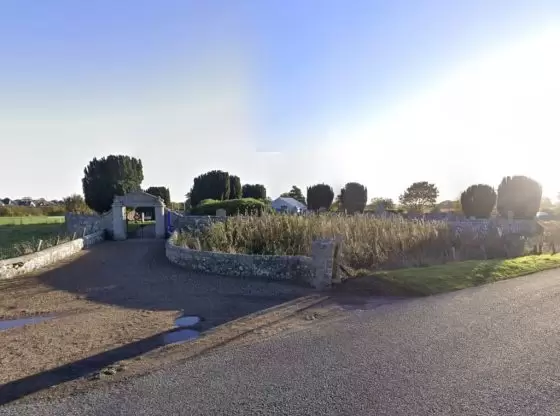
Fetterangus Graveyard
In the same book, John Henderson refers to the church at Fetterangus and notes on page 233 that;
The Presbytery records show that in the sixteenth century many of the laity were buried within the church, for which privilege a small fee was exacted. In 1604, a family of the name of Thomson, resident in Pitfour, gave much trouble by withholding payment of the charge. They were summoned before the Church Courts for “burying their parents in the Kirk of Fetterangus without satisfaction of the penalty ordered in such cases.
Bonnie Prince Charlie
I can’t specifically locate a residence for James Thomson that proves beyond doubt that he lived in the part of the Auchtydonald estate that was within the borders of the geographically detached part of Banffshire, within the parish of Old Deer. I am, however, satisfied that whether by geographic location or by cultural affiliation and historical allegiance, James Thomson regarded himself as a Banff man.
While creating my shortlist for consideration, I discovered a James Thomson, born on 11 November 1684 in Buthlaw, which I believe to be part of the adjacent Feichfield estate about one mile east of Longside. I decided he was probably too old to have started work for the SSPCK in 1721. Also, I noted in “The Muster Roll of Prince Charles Edward Stuart’s Army 1745-46 (ISBN: 978-1-903238-02-8) that James Thomson of Feichfield had been a Captain in Lord Pitsligo’s cavalry regiment, so was clearly not my ancestor. By a remarkable stroke of luck I also noticed on the same page that William Scott, late of Auchtydonald was also a captain in the same regiment. He was referred to as “late of Auchtydonald” as he was attainted for his part in the 1715 uprising and lost the estate of Auchtydonald as a result.
